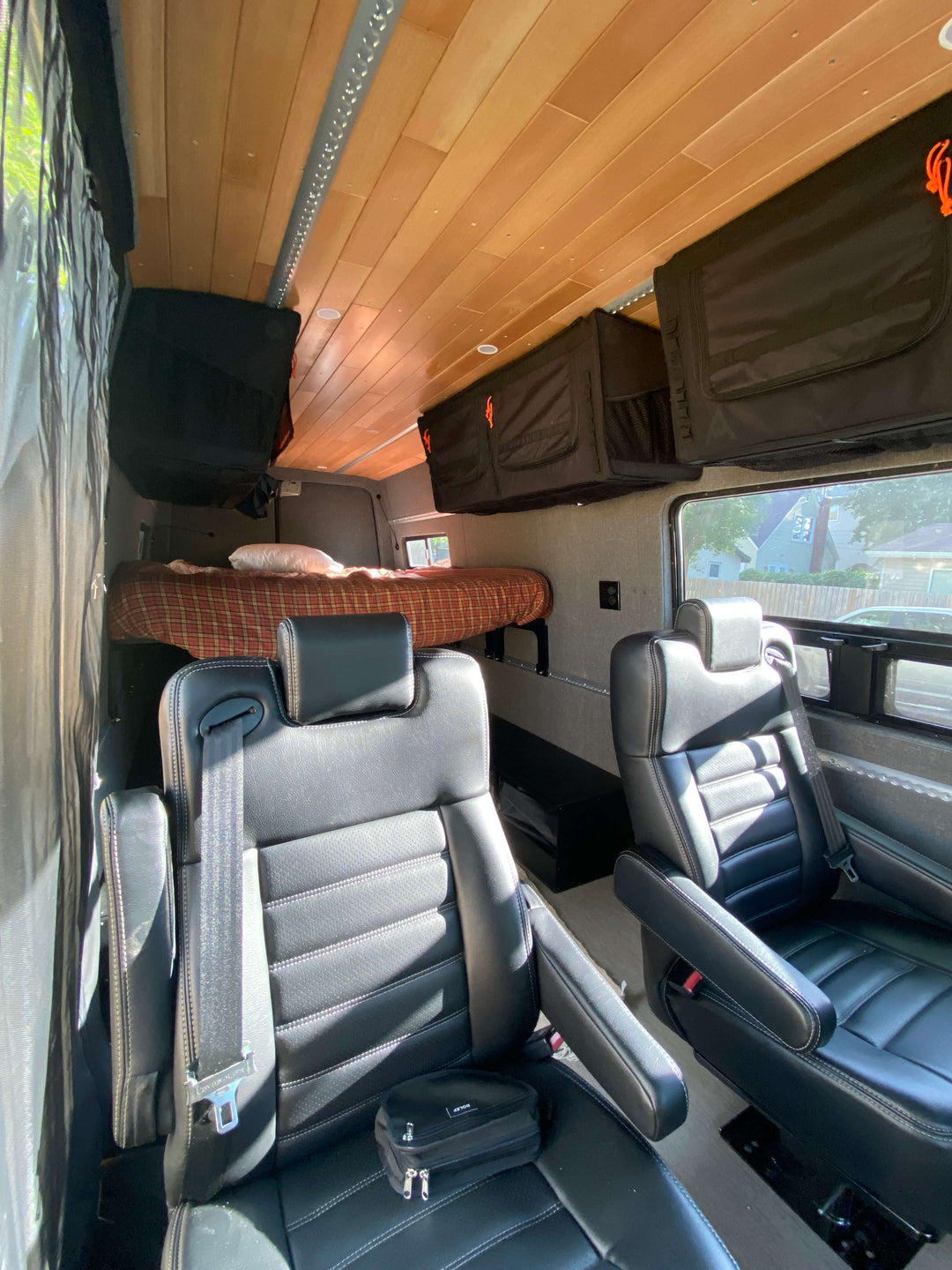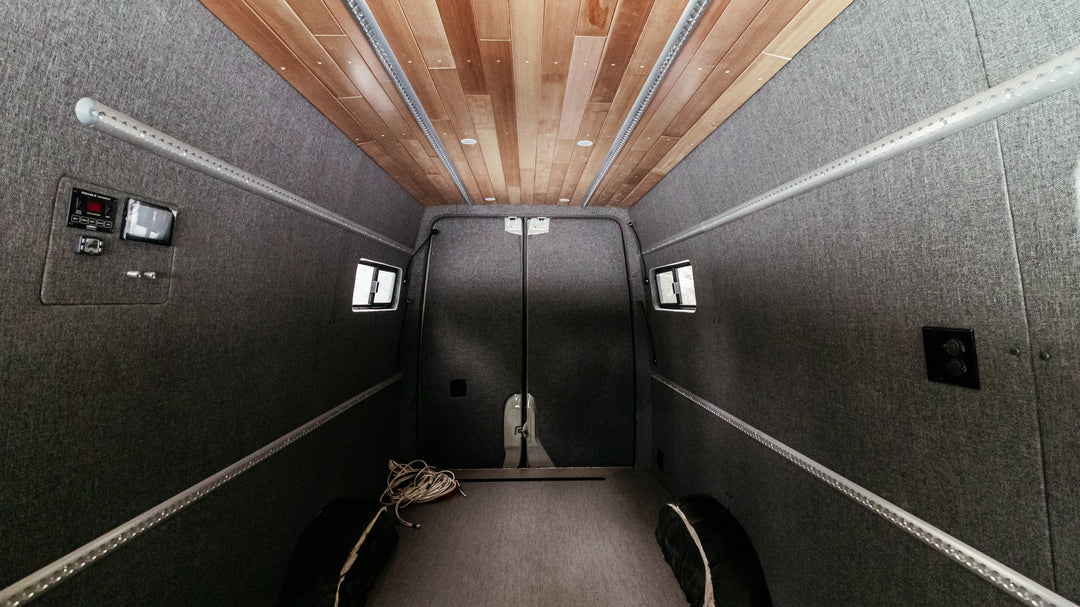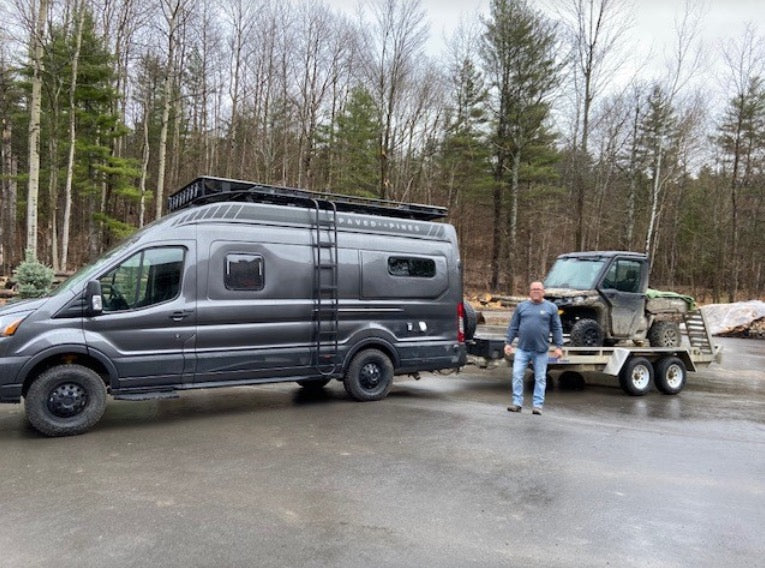How to Ship a New Camper Van Conversion to Your Home with Ease

When you buy a camper van online from a dealer or a private seller and the van is hundreds or even thousands of kilometers away, you might not want to spend the time and money to go and drive it all the home yourself. Fortunately, you will be able to ship it home with very minimal involvement yourself.
One of the most important parts of shipping a campervan, or any type of conversion van, will be what type of van it is and its overall size. Small camper vans and most medium-sized camper vans can be shipped on a typical open-air car carrier. Larger camper vans, such as those that could be considered to be a Class B RV, will need to be shipped as an “oversized vehicle” on a flatbed car carrier. Whether or not you will be able to ship on an open carrier will play an important role in your overall shipping cost. It can also possibly impact the amount of time it takes to ship a van, as flatbed shipments typically take more time to complete shipments.
With most vehicle shipping companies, any vehicle 7 meters long or less, 2.4 meters tall or less, and 2.4 meters wide or less can be shipped on a regular open-air carrier. The following list will break down camper van sizes to help let you know if they will be able to ship on a typical open car carrier:
- Micro campervan Length: 4.3 - 4.9 meters Width: 2.0 - 2.2 meters Height: 1.8 -1.9 meters
- Small campervan - Length: 4.6 - 5.0 meters Width: 1.9 - 2.3 meters Height: 1.9 - 2.4 meters
- Medium campervan - Length: 5.2 - 6.0 meters Width: 2.4 - 2.5 meters Height: 2.2 - 2.8 meters
- Large campervan - Length: 5.9 - 7.4 meters Width: 2.4 - 2.5 meters Height: 2.6 - 3.1 meters
- Box-van campervan - Length: 6.1 - 7.2 meters Width: 2.1 - 2.5 meters Height: 3.0 - 3.5 meters
So, from looking at that list with the maximum vehicle dimensions allowed on an open carrier in mind, you can see that all micro campervans and small campervans can be shipped on a regular open carrier. Most medium-sized campervans can be shipped on an open carrier, and almost no large or box-van campervans can fit on an open-vehicle carrier. As a rule of thumb, any camper van with a bathroom will likely be right near the cut-off point regarding size limits for open carriers, so you will need to find the specific dimensions.
Setting Up Your Camper Van Conversion Shipment
One of the best parts of shipping a conversion van, or any vehicle, is how little will be required of yourself. Scheduling and booking your shipment will consist of planning your needs, researching different companies, and then talking to the company you choose to ship with on the phone. When you plan your specific van shipping needs, you will need to figure out the exact size, make, and model of your van, the dates of pick up and delivery you prefer, and the addresses where the van will be picked up from and delivered to. You will need all this information when you officially book your shipment later. Then, researching potential shipping companies will entail reading online reviews about these companies on sites like Google. Then, you should visit the various companies’ websites, ensure they ship within Canada, and get a free quote online or by calling. At this point, you can compare the quoted prices of the companies that had good reviews.
Finally, you can contact the company you have selected to ship with and book your shipment. Keep in mind, the dates of your pick up and delivery will both be periods of two to three days rather than guaranteed exact dates. Unpredictable factors such as traffic and weather prevent companies from being able to guarantee specific dates and timeframes.
The Cost of Shipping a Camper Van
The overall cost of shipping a camper van will vary because of several independent variables, including the size and weight of the van. Other factors will include the time of year when you are shipping your conversion van, the average price of gas at the time of your shipment, which shipping options you selected, and how much notice of your shipment you gave your vehicle shipping company.
These factors will cause the price of your shipment to fluctuate at different times during the year. So, your best bet will always be to get free quotes from competing companies and then choose the company that works best for you. Shipping a van on an open carrier (if small enough) will cost between CA$0.4 to CA$2.2 per kilometer. If you have a larger camper van conversion that you are shipping and need it shipped on a flatbed trailer, it can cost more at a range of CA$1.0 to CA$4.5 per kilometer.
In most cases, shorter distance shipments of 250-700 kilometers will cost more per kilometer than longer distance shipments of 1000 plus kilometers. For example, if we assumed all of the variables affecting the cost of vehicle shipping were about average at the time of a shipment, the cost to ship a small camper van from Montreal to Toronto (approximately 500 kilometers) on an open carrier would cost about CA$1.8 per kilometer and CA$900 overall. In contrast, shipping with the same circumstance in mind from Montreal to Winnipeg (approximately 1,100 kilometers) would cost about CA$1.2 per kilometer and CA$1,325 overall.
How You Can Save Money When Shipping a Van
If one of your main concerns is keeping the cost as low as possible when shipping a campervan, you can do several things to save a maximum amount of money. First, do your best to ship during a time of the year when shipping companies are much less busy, such as in October or February. Vehicle transport services are most in-demand from May through September, so at the very least, avoid shipping during those months.
You should also be sure to avoid any premium shipping options if at all possible. If you are shipping a smaller camping van and can ship it on an open carrier, do so. Do not ship it in an enclosed carrier or choose to top-load it, as selecting these options will add several hundred dollars to your final price. Finally, officially book and lock in your van shipment at least one month before you want it picked up. You can still book a shipment with only a week or two of notice, but it will cost more to procure a spot on the carrier as there will be fewer available carriers and spaces on those carriers.
How You Can Prepare for Your Camper Van Shipment
Getting ready to ship a camper van will, unfortunately, take a bit of effort on your part. This will consist of getting the vans outside washed or washed, taking out any personal belongings or loose parts, and ensuring the van only has about a quarter tank of gas. The exterior needs to be clean so that the driver who arrives to transport it can look over the outside of the van and check it for any damage that has occurred before shipping. This is done for insurance and ensures that any preexisting damage is not covered.
Removing personal items and/or loose parts is also necessary for insurance. However, it is necessary to remove things like glasses, gloves, plates, portable speakers, or anything else that is not necessary to the operation of the van because they will never be covered if these types of things get damaged in transit. Only having a quarter tank of gas is a part of the preparation because the van needs enough gas to be driven on and off of the carrier, but more than that could pose a fire hazard when it is being shipped.
If you are buying a campervan from our team at Paved To Pines, we can handle the entire transportation process to our shop and back to your home free of charge.








Greetings,
I see you sell your conversions to the US. What is the process to export/import a custom Canada conversion van into the US from Canada? Further, if it is possible, what costs (taxes and fees) would I be looking at for let’s say a rounded cost of $100k CAD?
Amazing Post.
Leave a comment